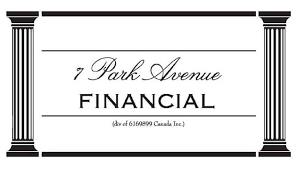|
Line of Credit Business Loan: Gateway to Flexible Business Financing
Comparing Business Loans: When is a Line of Credit Your Best Option?
YOUR COMPANY IS LOOKING FOR A LINE OF CREDIT BUSINESS LOAN SOLUTION!
Line of Credit vs. Traditional Loans: Choosing the Right Business Finance
You've arrived at the right address! Welcome to 7 Park Avenue Financial
Financing & Cash flow are the biggest issues facing businesses today
ARE YOU UNAWARE OR DISSATISFIED WITH YOUR CURRENT BUSINESS FINANCING OPTIONS?
CALL NOW - DIRECT LINE - 416 319 5769 - Let's talk or arrange a meeting to discuss your needs
EMAIL - sprokop@7parkavenuefinancial.com

A Line of Credit Business Loan provides pivotal financial flexibility, allowing businesses to access funds on-demand to leverage growth opportunities and manage cash flow effectively.
"Unlock financial flexibility; your business’s opportunity to thrive on its terms!"
7 Park Avenue Financial originates business financing solutions for Canadian Businesses – We offer LINE OF CREDIT BUSINESS LOANS solutions that solve the issue of cash flow and working capital – Save time and focus on profits and business opportunities
INTRODUCTION
Asset-based credit financing is fast becoming a well-known funding solution for Canadian business owners / financial managers. Equally, as popular a solution is the alternative financing delivered through various types of factoring solutions - both of these compete directly with a business loan arrangement from unsecured loans from traditional bank financing via the asset-based line of credit solution.
A Line of Credit Business Loan is a flexible business financing solution tailored for Canadian businesses.
Unlike traditional loans, which provide a lump-sum amount upfront and require minimum monthly payments, these credit lines offer businesses the ability to draw funds as needed, up to a pre-approved limit, ensuring capital is available when it is most necessary. This optimizes cash flow but also enhances the ability of businesses to manage day-to-day funding costs and obligations as well as the ability to invest in opportunities without the pressure of a fixed repayment schedule.
Misunderstanding abounds around which solution might be best for your company. Let's dig in.
THE FUNDING NEEDS OF SME / SMB BUSINESSES IN CANADA
There's no question that SME COMMERCIAL FINANCE needs are in constant need of a commercial loan solution of some type. Owners who cannot interpret their current financial position properly don't properly understand the true value and importance of cash flow in the future of their business as related to their company's assets around inventory financing and a/r finance and the ability to have funding to finance equipment and technology needs. Inventory and equipment funding needs always present a unique challenge for financial resources.
The cash flow required to run your company daily is a factor of your total 'working capital cycle.' As your current assets (receivables and inventory mostly) build-up via rapid growth in sales revenues, you find they cannot be liquidated as fast as they might be able to - however, a brief delay is pictured in your collection cycle.
Naturally, some of that cash flow is required to service your long-term debt financing needs, specifically to service loans and leases your company might have in place on the balance sheet for other assets.
THE NEED FOR EXTERNAL FINANCING FOR GROWTH FINANCE PLANS
When a Canadian business has too much money tied up in accounts receivable and inventory, it must consider business funding and financing alternatives to address that issue and improve cash flow with the obligations of a fixed installment term loan.
Enter the asset-based lender! It's a strong alternative to the traditional line offered by Canadian chartered banks for a substantial amount of additional business capital. Many businesses can cover short-term obligations with a properly structured facility.
ASSET BASED LENDING VERSUS FACTORING
Two of those financing alternatives are asset-based lines of credit (we also like to call those 'working capital facilities'), as well as factoring / receivable financing. Many fast-growing firms and don't have the financial requirements to appease a Canadian chartered bank are looking, therefore, for alternate solutions such as asset based loans based on market value, not the book value of assets or external covenants in a loan agreement.
Clients are always asking us which one is best for their firm. We believe that a true working capital facility via an asset-based loan is probably better than factoring. Still, the reality is that many firms cannot qualify for a true working capital facility for several reasons - i.e. size, credit quality, lack of sales and assets, etc.
HOW DO ABL LINES INCREASE CASH FLOW AND IMPROVE THE BALANCE SHEET?
It's key to remember that any 'business line of credit financing will have a positive effect on your cash flow, namely improving it(!), and at the same time reducing the need to borrow funds on a long-term basis. Prudent business owners/managers will avoid new debt on the balance sheet and recognize the dilution of new owner equity.
It is essential to note that both an asset-based line of credit and a factoring facility are not 'debt' - you are not borrowing at face value of assets at a fixed rate and are not increasing the overall debt load of your company.
Both facilities simply 'cash flow' or 'monetize' your current assets in a more efficient manner. In banking, there is always a ' maximum loan amount based on a set credit line - ABL facilities tend to grow automatically with sales.
The reality is that when you do free up that additional cash flow by using one of these two facilities, you, as we noted, reduce your dependence on external funding or equity needs for areas such as payroll expenses and general working capital needs.
In some cases, a company can pledge a specific asset such as real estate or equipment for additional funds. ABL lenders protect themselves from potential loss by having strong experience in asset values and asset turnover in short term needs of a business.
Your firm now has the flexibility to address day-to-day issues and grow. Many firms who are growing quickly won't qualify for bank financing if for the only reason they are growing too quickly! A monthly ' borrowing-based certificate ' is typically established at the end of the month to determine your cash flow availability. Receivables must be commercial receivables, not consumers.
UNDERSTANDING A/R FINANCING
Clients then ask what the main difference is between these two accounts receivable financing facilities. It's actually quite simple - a factoring facility is simply the sale of your accounts receivable for immediate cash on an ongoing basis.
On the other hand, an asset based line of credit, a true ' revolving line,' provides that same level of immediate cash, but your firm hasn't 'sold 'the outstanding receivables. You have provided them as collateral, given they have high liquid collateral value.
The other main difference is that a true asset-based line of credit will also cover inventory and physical assets in many cases. In many cases, it increases your cash flow availability by 50% or more. This is because advance rates are higher in asset-based lending companies.
In summary, asset-based credit and factoring lines are coming into their own in Canada as true business financing facilities. They are a viable alternative to traditional bank financing - albeit more costly.
KEY TAKEAWAYS
Interest Rates and Fees: Essential to understand the costs, including potential APRs and associated fees, which influence the total expense over the credit line's life.
Eligibility Requirements: Key for businesses to know if they qualify for the loan based on their financial health and credit history.
Repayment Terms: Crucial for maintaining financial stability, detailing the flexibility of withdrawals and repayments.
Advantages of Flexible Funding: Central to leverage a line of credit, which allows businesses to react swiftly to opportunities or financial obligations as they arise. Variable interest rates are also available under this type of financing
Comparisons to Other Business Loans: Important for making informed decisions, offering insights into why a line of credit might be preferable depending on the business scenario.
CONCLUSION - LINE OF CREDIT BUSINESS LOANS
Both facilities have different criteria for approval, and overall an asset-based line of credit, or working capital facility, is probably the best facility for your firm - if you qualify. Investigate carefully and determine which type of financing might be right for your firm. Common asset-based borrowers come from every industry in Canada - given that sales and assets are the key criteria.
Looking for the best answer to your cash flow needs?
Whether you are a start-up or an established growing business, call 7 Park Avenue Financial, a trusted, credible and experienced Canadian business financing advisor who can assist you in solving that cash flow financing conundrum!
We'll show you how asset-based credit factoring cash flow solutions can solve the business funding challenge and are a flexible form financing services tailored to your needs.
FAQ: FREQUENTLY ASKED QUESTIONS / PEOPLE ALSO ASK / MORE INFORMATION
What is an ABL Line Of Credit?
An asset based loan is a type of business financing that provides businesses with more flexibility. It is a line of credit structured as an ongoing revolving fund for small and mid sized businesses. Some larger corporations also use asset-backed facilities and can obtain lines at interest rates comparable to bank rates.
An asset based loan (ABL) is a type of business financing that provides businesses with an easy way to borrow from assets. Company assets secure aBLs, and the most common structure is revolving lines of credit, which allow companies to access money as needed for day-to-day expenses regularly.
A company's assets are what sets ABL lines apart from it apart from traditional bank financing; knowing this makes sense for them to have access to lines of credit secured by those specific assets.
Why should a company consider asset-based lending services?
Asset-Based Lending Services ( ABL ) are an ideal option for any business that needs services beyond what traditional banks can offer. This type of lending helps your business have more leverage to grow without further need for recapitalization.
It's able to be increased or decreased according to how large you are right now and also will give ongoing access to business credit. Companies do not need to sacrifice equity in their company - as a result, ABL is perfect for growing businesses!
What are the benefits of choosing a Line of Credit over a traditional loan?
A Line of Credit offers flexible withdrawals and repayments, making it ideal for managing fluctuating cash flow needs without committing to a large, one-time loan disbursement.
How does a Business Line of Credit affect my credit score?
Utilizing a Line of Credit wisely can help improve your business credit score by demonstrating responsible credit management and reliability to lenders. For small businesses a good personal credit score of the owner is important.
What should I consider when comparing interest rates on Lines of Credit?
Compare APRs, factor in fees, and understand how the interest compounds—whether daily, monthly, or annually—to gauge the true cost of the credit line.
Can I use a Line of Credit for any type of business expense?
Yes, funds from a Line of Credit can be used for a variety of business purposes, including inventory purchases, operational expenses, and capital investments. There is no fixed monthly payment in a business credit line.
What are the typical repayment terms for a Business Line of Credit?
Repayment can vary greatly, with some lines requiring monthly interest payments and others allowing for more flexible arrangements based on cash flow.
What is the typical approval time for a Business Line of Credit?
Approval times can vary from a few days to several weeks, depending on the lender’s process and the completeness of the submitted documentation.
Are there any sector-specific Lines of Credit available for niche businesses?
Yes, some lenders offer lines of credit specifically tailored to industries like construction, healthcare, or retail, which may have unique financial needs and cycles.
Is collateral required for securing a Business Line of Credit?
While some lines of credit are unsecured, ( typically bank lines ) larger revolving credit lines may require collateral such as real estate or inventory to mitigate the lender’s risk.
How can I increase my chances of being approved for a Business Line of Credit?
Improve your business's credit score, ensure your financial statements are accurate, and reduce your existing debt levels to enhance your eligibility when you borrow money.
What are the tax implications of a Business Lines of Credit?
When you pay interest on a SME small business line of credit it is typically tax-deductible, but it’s advisable to consult with a tax professional for your specific circumstances and business advice.
What defines the credit limit for a Business Line of Credit?
The credit limit with a credit application is typically based on the borrower’s creditworthiness, which includes credit history, financial health, and the lender’s risk assessment. Asset-based credit lines increase automatically as you sales / business's revenue and assets grow
How does a draw period work in a Line of Credit?
Unlike small business loans , during the draw period, the borrower can access funds up to the maximum limit, repay, and redraw as needed, similar to using a business credit card for managing cash flow. Interest rate charges only apply to funds being used.
What happens after the draw period of a Line of Credit expires?
After the draw period, you may enter a repayment period where no further withdrawals can be made, and the outstanding balance must be repaid within a specified term.

' Canadian Business Financing With The Intelligent Use Of Experience '
STAN PROKOP
7 Park Avenue Financial/Copyright/2024

Stan Prokop is the founder of 7 Park Avenue Financial and a recognized expert on Canadian Business Financing. Since 2004 Stan has helped hundreds of small, medium and large organizations achieve the financing they need to survive and grow. He has decades of credit and lending experience working for firms such as Hewlett Packard / Cable & Wireless / Ashland Oil
|